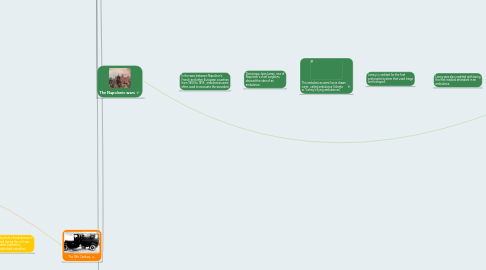The History of EMS
von sabrina eldridge

1. 4,000 to 5,000 years ago, a civilization in Mesopotamia(southwest Asia), inscribed clay tablets with some of the earliest
2. Ancient Times
3. Tablets had step-by-step instructions for patient care based on the patients description of symptoms
4. Tablets also included instructions on how to create the medications needed to cure the patients and explained how an when to administer them.
5. Difference between protocols then and today are physical exams
6. in 1862, Egyptologist Edwin Smith purchased a papyrus scroll dating back to 1500 B.C.E. it contained 48 medical case histories.
7. About the same time in another civilization, the Mesopotamia region, king Hammurabi of Babylon commissioned a large painting of 282 case laws known today as the "Code of Hammurabi", that code governed criminal and civil matters; one section of the code was devoted to the regulation of medical fees and penalties.
8. The first recorded use of an ambulance was in 1487, Queen Isabella of Spain designated certain wagons for the transport of injured soldiers.
9. King Charles V, Queen Isabella's grandson, reportedly used field ambulances in 1553 in the siege of Metz.
10. The 19th Century
11. In 1861, development of ambulances in the US occurred during the civil war, surgeon Jonathan Letterman reorganized battlefield casualties.
12. In 1864, president Abraham Lincoln signed in a law that established a uniform army ambulance plan, an act that separated ambulances from every other army transport under medical command.
13. Between 1861 and 1865, a nurse, Clara Barton coordinated care for the sick and injured at civil war battlefield sites along the east coast, she continued the concept of ambulance Volante by organizing triage and transport.
14. The first civilian ambulance was established in 1860 in Cincinnati , Ohio at Commercial Hospital.
15. In 1869, Bellvue Hospital, in New York City, began to operate an ambulance service.
16. By 1899, Michael Reese Hospital in Chicago bean to operate a motorized ambulance.
17. The Napolonic wars
18. In the wars between Napoleon's French and other European countries from 1803 to 1815 , ambulances were often used to evacuate the wounded
19. Dominique Jean Larrey, one of Napoleon's chief surgeons devised the idea of an ambulance.
20. The ambulances were horse drawn carts , called ambulance Volante or "Larrey's flying ambulances".
21. Larrey is credited for the first prehospital system that used triage and transport.
22. Larrey was also credited with being the first medical attendant in an ambulance.
23. The first use of aircraft for medical evacuation is lost to history, there are records of hot balloons being used to evacuate wounded from the Prussian siege of Paris in 1870.
24. In 1915, unmodified French fighter aircraft were used to ferry the injured.
25. The 20th Century
26. During World War I, mortality rates were so high with solders due to echelons being so far was from the battle fields. After World War I some hospitals experimented with placing physicians on ambulances.
27. In 1926, The Phoenix Fire Department began providing "Inhalator" services an officially entered the realm of medial care.
28. In 1928, the first boa fide rescue squad , called the Roanoke Life Saving Crew was started in Roanoke, Virginia.
29. When World War II started, may hospital-based ambulance services shut down. The city government turned ambulance services over to the police department and fire department. Ambulance work was often seen as punishment and many departments quickly eliminated the service as soon as they could.
30. In the 1950's, the US went to war with Korea and Vietnam back to back, the US Army soon began using helicopters to move the wounded from the frontlines to Mobile Army Surgical Hospitals (MASH). This improves mortality rates. Evacuation rates were within 10-20 minutes.
31. In 1956, physician Peter Safar and James Elam pioneered the use of mouth-to-mouth resuscitation.
32. In 1959, the first defibrillator was used at John Hopkins Hospital in Baltimore.
33. In 1960, CPR was refind and deemed to be effective in resuscitation.
34. In 1966, Accidental Death and Disability: The Neglected Disease of Modern Society focused attention on the problem. "The White Page", consisted of: -Lack of uniform laws and standards for prehospital care. -Poorly equipped ambulances. -Poor quality ambulances. -lack of communication between the hospital and the ambulance. - Inadequate training of ambulance personnel. -Inadequate physician and nursing staffing of hospital emergency departments.
35. In 1966, The Highway Safety Act promulgated initial EMS guidelines for the US.
36. In 1966, the first portable defibrillator was used in Belfast, Ireland.
37. In 1969, the first paramedic program began in Miami, Florida by Dr. Eugene Nagel.
38. In 1970, National Registry for Emergency Medical Technicians was established.
39. On January 15, 1972, the show Emergency! debut on NBC. The show brought public attention to the concept of prehospital care and encouraged development of modern EMS System.
40. In 1973, congress passed the Emerrgency Medical Services System Act.
41. In the early 1980's, Helicopter EMS(HEMS) began to develop.
42. In 1990, congress passed the Trauma Care Systems and Development Act.


